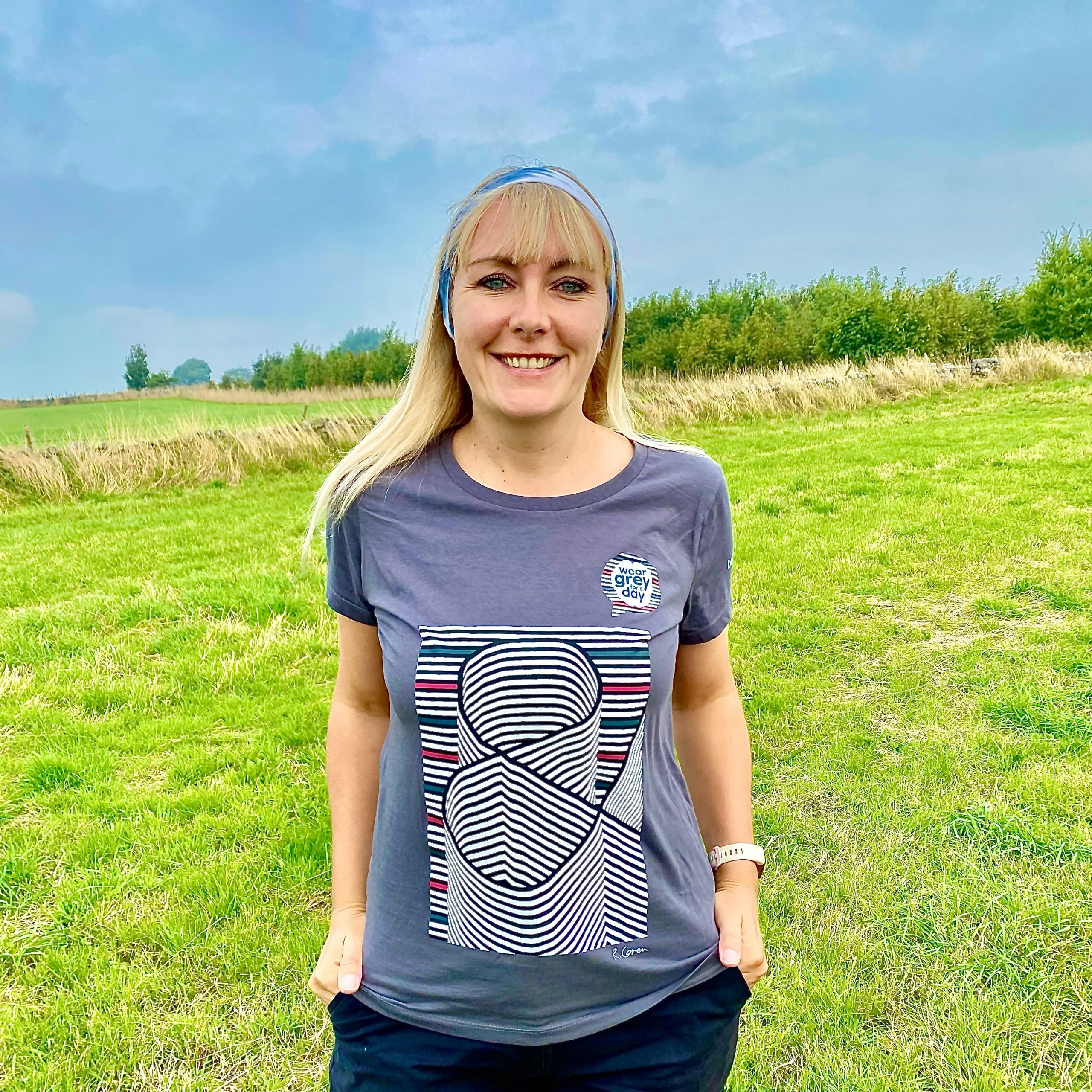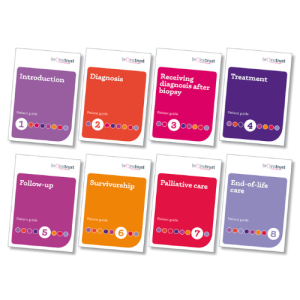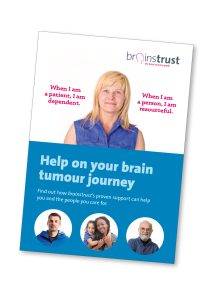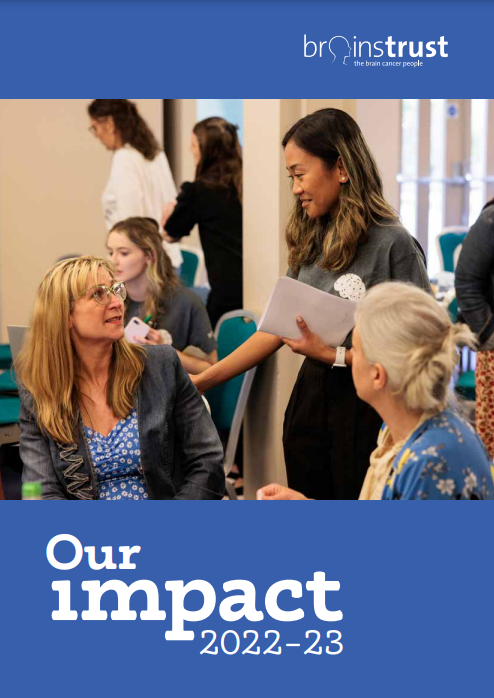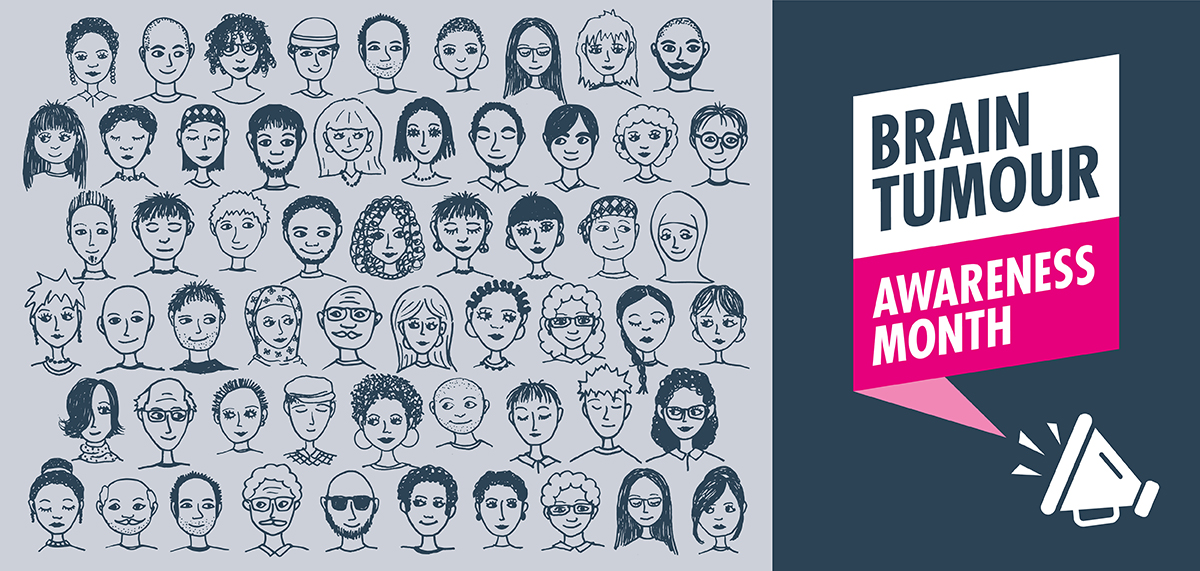
The purpose of Brain Tumour Awareness Month is to shine a light upon this neglected condition, such that people can better understand what it really means to have a brain tumour. A brain tumour can affect any of us. There are over 16,000 primary and secondary brain tumours diagnosed in the UK each year. There are over 80,000 people living with a brain tumour diagnosis and the impact it brings. It is a relatively common condition and yet it remains terrifying and mysterious to many.
Brain tumour treatment is complex, nearly always harmful, and diagnosis brings with it enormous impact on well-being and mental health. Fear, isolation, disempowerment and loss of control abound. This is where brainstrust steps in. We are uniquely dedicated to providing the emotional and practical support desperately needed upon hearing the words “you have a brain tumour”.
It is brainstrust’s task to be there for brain tumour sufferers at this terrifying moment.
This Brain Tumour Awareness Month, share your story to help others understand
The best way to understand the realities of life with a brain tumour is to listen to the stories of brain tumour patients. So please, click below and listen to the stories of 6 people who have reached out to brainstrust for help after hearing the words “you have a brain tumour”.
Help people to understand – share your story
Nothing is more powerful to help people understand what life with a brain tumour is like than the real life experience of others.
If you are a brain tumour patient, or caregiver, you are an expert by experience. You have a powerful story that will help raise awareness of what life is really like. Like Rowan, Andrew, Jo, Jane, Helen and Laura you can become a powerful and persuasive ambassador for our mission to help people be well supported on their journey.
Pick up your Brain Tumour Awareness Month merchandise
There are many ways to support our mission this March, including picking up your brain tumour awareness hoodies, t-shirts, pins and bands from the brainstrust online store. Dispatched from our office by Ellie, these will reach you quickly to help you fly the flag for our mission and cause.
Help us get more of our vital resources to the people that need them this Brain Tumour Awareness Month
The resources brainstrust offer are designed to help people living with a brain tumour diagnosis, and their families, feel more informed, in control and engaged with their care, no matter where they are on their brain tumour journey.
Go the extra mile in Brain Tumour Awareness Month
If you want to go the extra mile for people living with brain tumours, why not host a Brain Tumour Awareness Month fundraiser and spread the word? It’s a great chance to get together and have some fun while raising vital funds for the brain tumour community. Here are a few fundraising superstars to help get you inspired…
Feeling inspired?
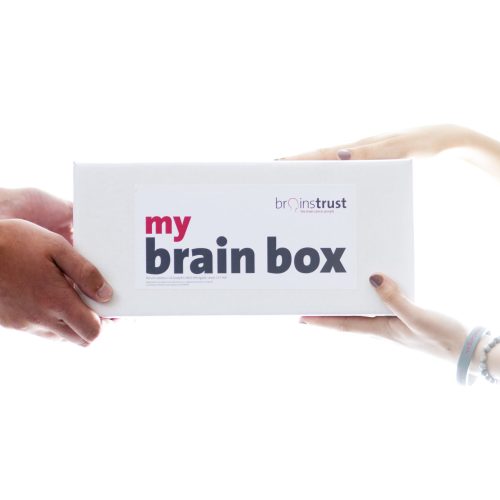
the brainstrust impact
As well as helping more people understand what life is like with a brain tumour, this March we are also shouting loudly about the impact of our work, and encouraging more people to seek help, and sooner, so that they can have their best possible day, every day, after a brain tumour diagnosis.
Feel less alone and more supported in brain tumour awareness month: events for you in March
London Meet Up, 5th March 1500, Pizza Express Euston Road – face to face
Social Group – Tea and a Wee Blether, 5th March 1200 – online
Art time with Maddy James – social, mindful and creative group for patients and caregivers, 6th March 1030 – online
High grade brain tumour support group, 7th March 1300 – online
Acoustic Neuroma support group, 8th March 1300 – online
‘Calmness and confidence – part 1’ – hypnotherapy for patients and caregivers, 6th March 1400-1500 – online
‘Calmness and confidence – part 2’ – hypnotherapy for patients and caregivers, 13th March 1400-1500 – online
Colloid cyst support group, 14th March 1300 – online
Low grade brain tumour support group, 14th March 1600 – online
Plus much more as the month unfolds – visit eventbrite for the full brainstrust calendar…





